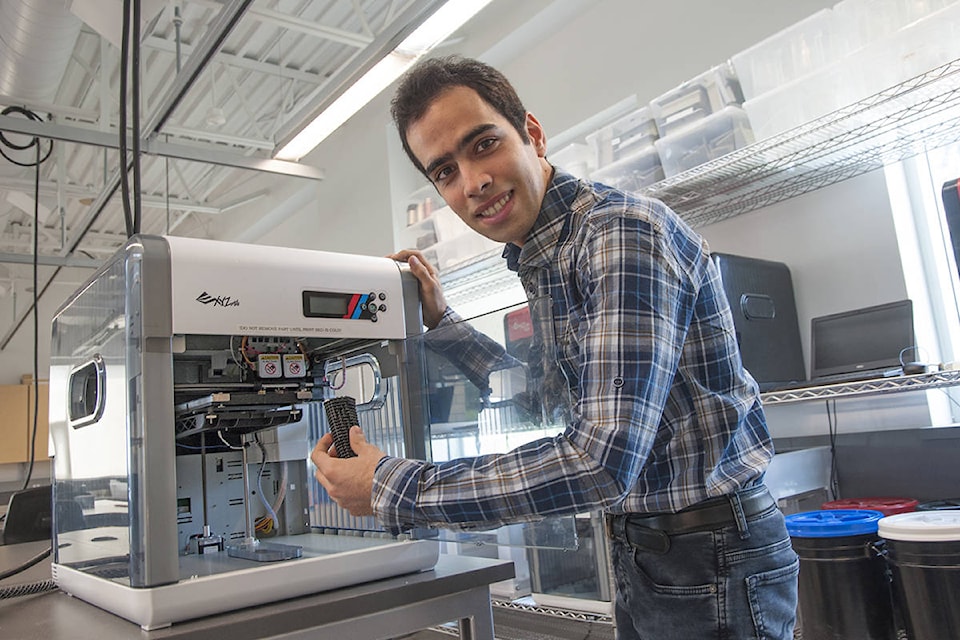With 3D printer techology, one researcher has discovered a new artificial bone design that can be customized and made for stronger bone replacements.
Hossein Montazerian, research assistant with UBCO’s school of engineering, has identified a way to model and create artificial bone grafts that can be custom printed.
Montazerian said human bones are incredibly resilient, but when things go wrong, replacing them can be a painful process, requiring multiple surgeries.
“When designing artificial bone scaffolds it’s a fine balance between something that is porous enough to mix with natural bone and connective tissue, but at the same time strong enough for patients to lead a normal life,” he said. “We’ve identified a design that strikes that balance and can be custom built using a 3D printer.”
Traditional bone grafting is used in medicine to treat anything from traumatic fractures to defects and requires moving bone from one part of the body to another.
But Montazerian said his artificial bone grafts could be custom printed to potentially fit any patient and wouldn’t require transplanting existing bone fragments.
In his research, Montazerian analyzed 240 different bone graft designs and focused on just the ones that were both porous and strong. He printed those that performed the best using a 3D printer and then ran physical tests to determine how effective they would be under load in the real world.
“A few of the structures really stood out,” he said. “The best designs were up to 10 times stronger than the others and since they have properties that are much more similar to natural bone, they’re less likely to cause problems over the long term.”
Montazerian and his collaborators are working on the next generation of designs that will use a mix of two or more structures.
“We hope to produce bone grafts that will be ultra-porous, where the bone and connective tissues meet and are extra-strong at the points under the most stress. The ultimate goal is to produce a replacement that almost perfectly mimics real bone.”
While his bone graft designs are well on their way, Montazerian says the technology still needs some advances before it can be used clinically. For example, he said other researchers in the field are starting to refine biomaterials that won’t be rejected by the body and that can be printed with the very fine 3D details that his designs require.
“This solution has enormous potential and the next step will be to test how our designs behave in real biological systems,” he said. “I hope to see this kind of technology clinically implemented for real patients in the near future.”
Montazerian’s research was recently published in Science Direct’s Materials & Design.
